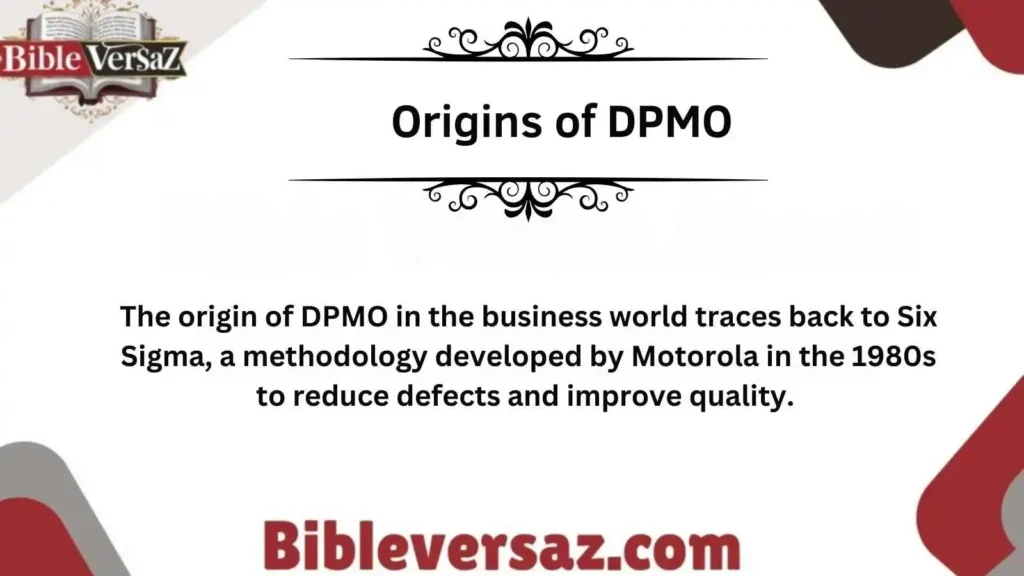In today’s fast-paced digital world, abbreviations and acronyms are everywhere. One such acronym that has gained traction is DPMO, and if you’re here, you’re probably wondering what it means.
Let’s break down the meaning of DPMO, explore its origins, and discover how you can use it effectively in different contexts.
What Does DPMO Mean?
DPMO stands for Defects Per Million Opportunities. This term is commonly used in Six Sigma methodology, a set of techniques and tools for process improvement. In a business context, DPMO measures the number of defects in a process per one million opportunities, helping organizations gauge their performance and identify areas for improvement.
However, in more casual contexts, DPMO has taken on a different meaning. In texting and online slang, DPMO can mean “Don’t Piss Me Off.” This informal usage is often employed to convey frustration, annoyance, or a playful warning in digital communication.
Understanding these two different interpretations of DPMO is essential for using it appropriately, whether you’re working on a quality control project or chatting with friends.
Origins of DPMO

The origin of DPMO in the business world traces back to Six Sigma, a methodology developed by Motorola in the 1980s to reduce defects and improve quality. By measuring defects per million opportunities, companies can achieve near-perfect processes.
The slang version, on the other hand, likely emerged from social media and texting culture, where abbreviations and acronyms help people communicate more quickly and expressively.
When to Use DPMO in Professional Settings
In professional environments, DPMO is a precise, technical term with a clear definition. Here are a few examples of how to use it:
- Quality Control Meetings: “Our current DPMO is 250, which means we have 250 defects per million opportunities. Let’s identify the root cause.”
- Performance Reports: “The Six Sigma project reduced our DPMO by 40%, improving overall manufacturing efficiency.”
- Continuous Improvement: “Tracking DPMO helps us maintain high-quality standards and exceed customer expectations.”
In these contexts, DPMO serves as a critical metric for evaluating performance and ensuring continuous improvement.
Using DPMO Casually (Texting and Social Media)
In informal settings, DPMO takes on a completely different vibe. Here’s how you might see it used:
- “Bro, I said I’d be there in 5 mins. DPMO!”
- “She took my charger again. DPMO.”
- “I told you I’m on my way. DPMO with the texts.”
This casual use reflects light-hearted frustration or annoyance, and context is key to ensuring it’s interpreted correctly.
Alternatives to DPMO (Professional Context)
If you’re discussing quality control, but want to avoid jargon, here are some alternatives:
- Defect Rate: A simpler term that conveys the same idea as DPMO.
- Error Frequency: Highlights how often errors occur in a process.
- Process Yield: Focuses on the percentage of units produced without defects.
Example: “Our defect rate is down 5% this quarter, reflecting fewer issues and higher quality.”
Alternatives to DPMO (Casual Context)
If you’re texting or chatting online and want to switch up your language, try these alternatives:
- Chill out: A softer way to ask someone to relax.
- Don’t test me: A direct alternative, with a playful or serious tone.
- Cut it out: Suggests someone stop an annoying behavior.
Example: “I said I’d call you back. Chill out.”
How to Choose the Best Alternative
Choosing the right alternative depends on context and tone. In professional environments, clarity and precision are key. In casual settings, consider your relationship with the person and the mood of the conversation.
- Formal: Use clear, universally understood terms like “defect rate” or “error frequency.”
- Informal: Playful or direct alternatives like “Don’t test me” often work best among friends.
Texting Examples of DPMO and Alternatives

Here are texting examples that are user-friendly and optimized for Google:
- Friend: “You coming to the party?”
You: “Yeah, I’m on my way. DPMO!” - Friend: “Why didn’t you text back?”
You: “I was driving, chill out.” - Sibling: “Stop eating my snacks.”
You: “Don’t test me, I bought those.” - Coworker: “Did you finish that report?”
You: “Almost done. Don’t rush me.” - Friend: “You said you’d be here an hour ago.”
You: “I’m on my way, DPMO.” - Group chat: “We’re all waiting for you.”
You: “Coming! Cut it out.” - Partner: “You forgot our anniversary?!”
You: “No way! Don’t test me like that.” - Friend: “Can I borrow your car?”
You: “If you fill up the gas, sure. DPMO.” - Family member: “You never clean your room.”
You: “Chill out, I’ll do it later.” - Friend: “Are you ignoring me?”
You: “Nope, just busy. Cut it out.”
Conclusion
Understanding the meaning of DPMO and its versatile usage can elevate your communication skills, whether you’re tackling quality improvement at work or having fun with friends online.
By recognizing the difference between the technical and slang interpretations, you can avoid misunderstandings and keep your conversations smooth and engaging.
Next time someone texts you “DPMO,” you’ll know exactly how to respond—with confidence and the perfect tone!

Freya Hughes combines her passion for faith and love for writing to craft meaningful content that resonates with believers of all backgrounds. Her articles on BibleVersaz.com are known for their clarity, warmth, and ability to illuminate the relevance of ancient scriptures in today’s world.


